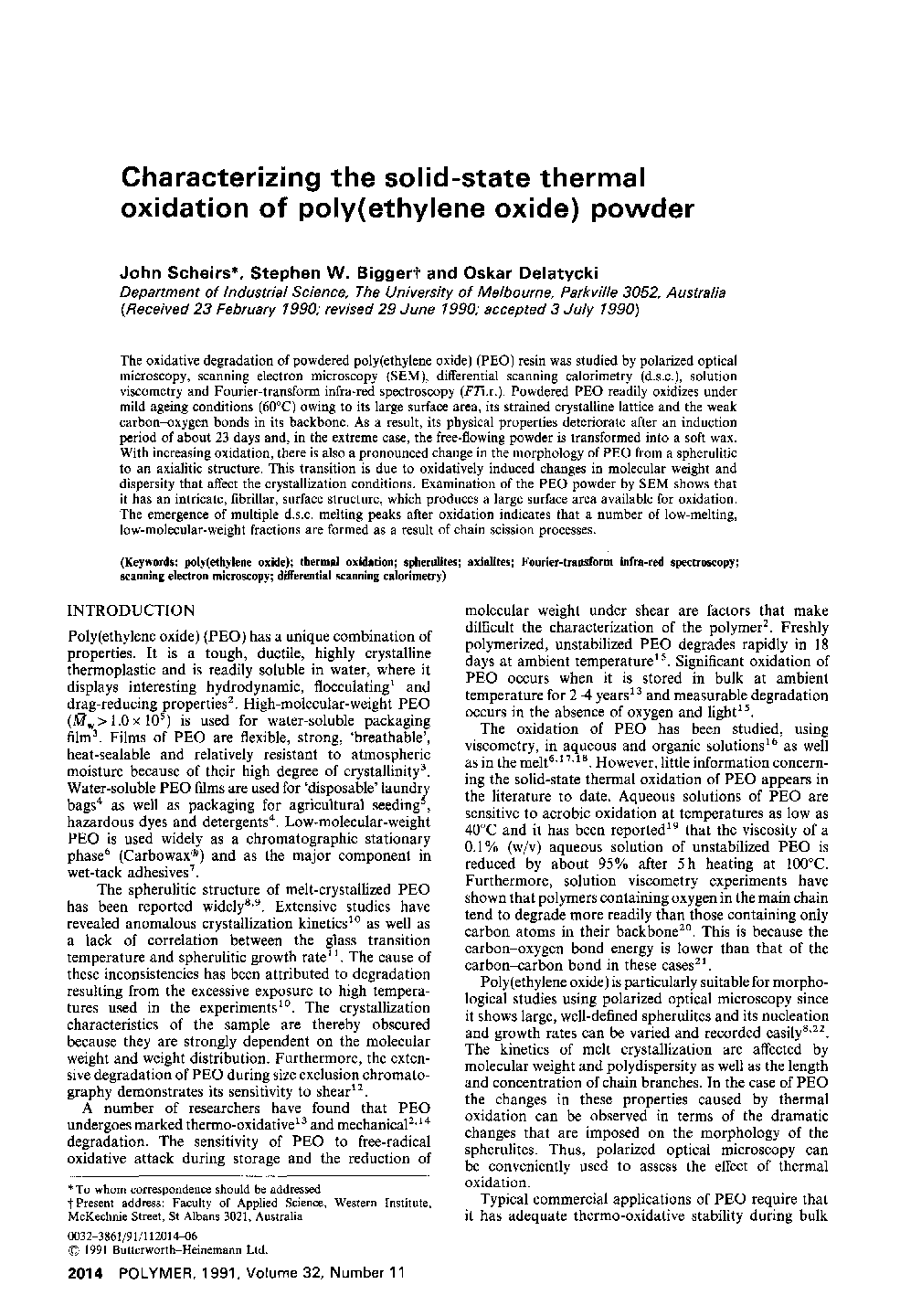| Article ID | Journal | Published Year | Pages | File Type |
|---|---|---|---|---|
| 5199093 | Polymer | 2019 | 6 Pages |
Abstract
The oxidative degradation of powdered poly(ethylene oxide) (PEO) resin was studied by polarized optical microscopy, scanning electron microscopy (SEM), differential scanning calorimetry (d.s.c.), solution viscometry and Fourier-transform infra-red spectroscopy (FTi.r.). Powdered PEO readily oxidizes under mild ageing conditions (60°C) owing to its large surface area, its strained crystalline lattice and the weak carbon-oxygen bonds in its backbone. As a result, its physical properties deteriorate after an induction period of about 23 days and, in the extreme case, the free-flowing powder is transformed into a soft wax. With increasing oxidation, there is also a pronounced change in the morphology of PEO from a spherulitic to an axialitic structure. This transition is due to oxidatively induced changes in molecular weight and dispersity that affect the crystallization conditions. Examination of the PEO powder by SEM shows that it has an intricate, fibrillar, surface structure, which produces a large surface area available for oxidation. The emergence of multiple d.s.c. melting peaks after oxidation indicates that a number of low-melting, low-molecular-weight fractions are formed as a result of chain scission processes.
Keywords
Related Topics
Physical Sciences and Engineering
Chemistry
Organic Chemistry
Authors
John Scheirs, Stephen W Bigger, Oskar Delatycki,
